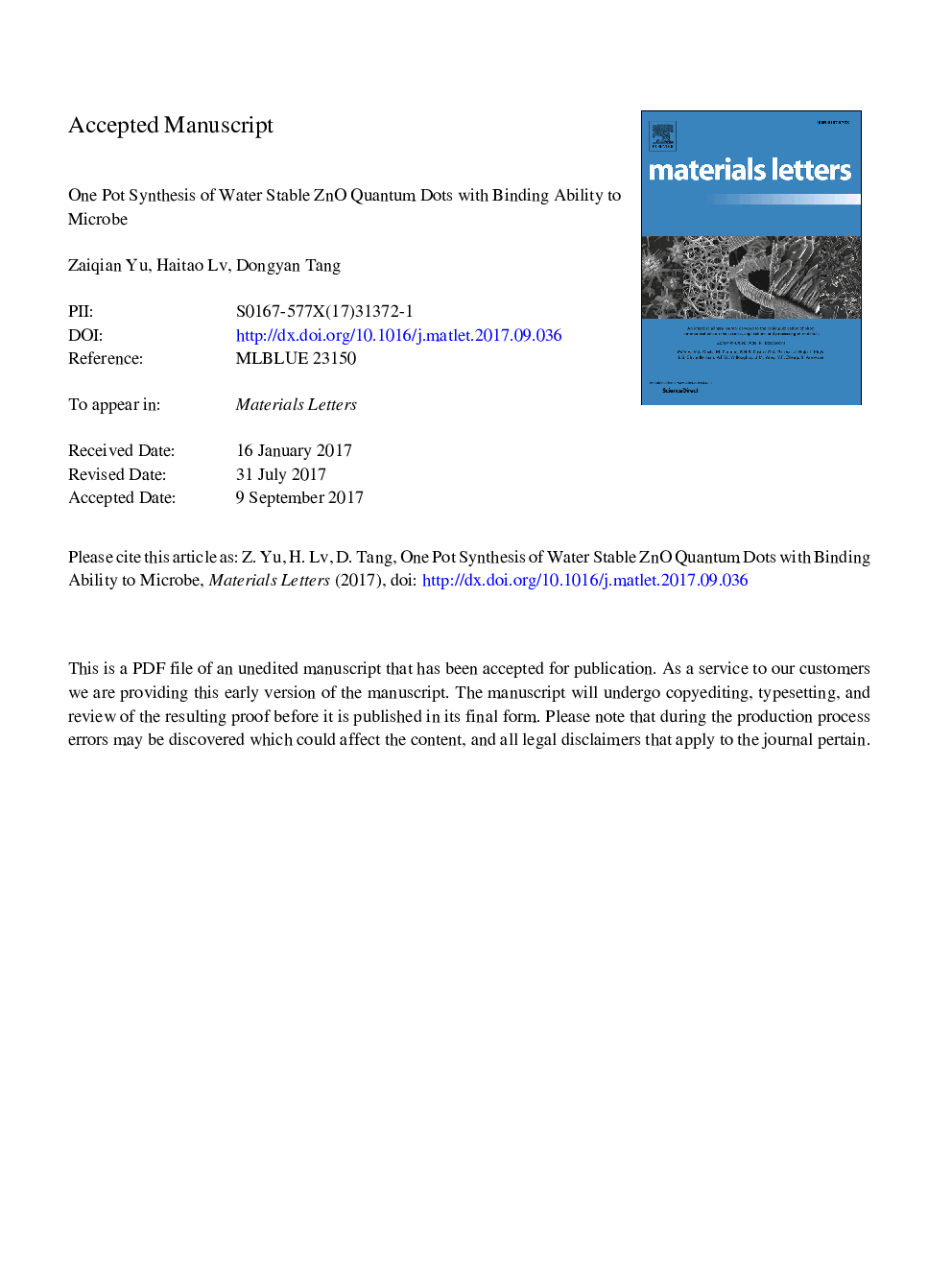| Article ID | Journal | Published Year | Pages | File Type |
|---|---|---|---|---|
| 5462632 | Materials Letters | 2018 | 8 Pages |
Abstract
Semiconductor Quantum dots (QD) has gained substantial interest in biological applications during the past decades. ZnO QDs do not include heavy metal ions, are favorable in some applications. However, ZnO QDs obtained via classic sol-gel route are unstable in water and are lack of functional groups that could be conjugated with bioactive molecules. In this paper, ZnO quantum dots (QDs) were synthesized using Zinc methacrylate as starting material. Zinc methacrylate, N-Isopropylacrylamide, N-tert-butyl acrylamide and (N-(3-aminopropyl) methacrylamide hydrochloride were copolymerized and refluxed within alkaline ethanol solution; ZnO@polymer QDs were generated in situ. Composition and photoluminescence of the obtained QDs were investigated. The QDs were utilized for labeling of bacteria E. coli. Results indicate that the emission wavelengths of the QDs were tuned in the scope of 440-482Â nm; the photoluminescence of the QDs was stable in water for 15Â days, ZnO composition in the QD is 7.25%, size of the QDs were in the range of 2.5-4Â nm, and the QDs have binding ability to E. coli.
Keywords
Related Topics
Physical Sciences and Engineering
Materials Science
Nanotechnology
Authors
Zaiqian Yu, Haitao Lv, Dongyan Tang,
